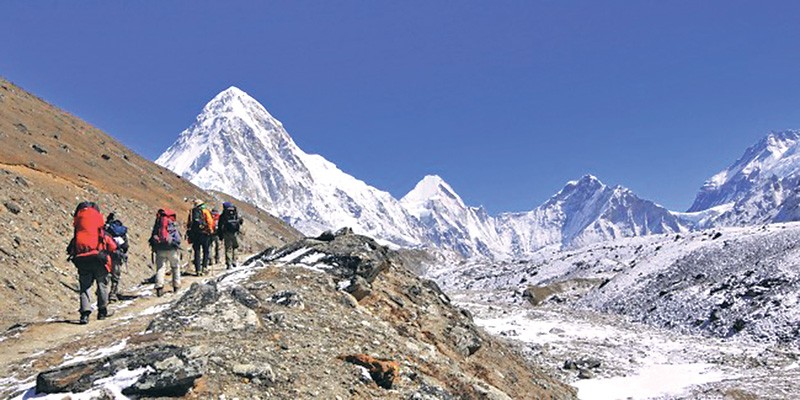January 30, 2017:– Nepal has not only seen a dramatic rise in the number of domestic trekkers, but risks associated with high-altitude sickness among them have grown equally fast.
According to the Himalayan Rescue Association (HRA), the problem of high-altitude sickness has become a serious problem in Manang and a few other mountainous destinations which are now connected by motorable roads.
“More than 400 cases of high-altitude sickness were recorded among Nepali trekkers in Manang last year, and the number could mount if awareness is not spread among them,†said DB Koirala, chairman of the HRA. “Fortunately, no one died or sustained serious injuries. But if we do not take this matter seriously, it’s going to become a big problem.â€
Trekkers who go too high too fast are at high risk of getting high-altitude illness. In Manang, a motorable road has reached Khangsar village at 3,756 metres. This means that adventure seekers who drive up will be reaching a great height in a short period of time, which would not be the case if they were going slowly on foot.
The HRA said that there was a growing trend among Nepalis to visit mountain destinations at 4,000 metres by driving up in their cars and motorbikes from the Tarai lowlands at 100 metres above sea level, which has increased risk of getting high-altitude sickness.
Mostly school and college students travel to Manang in two- and four-wheelers, and then set off to Tilicho Lake at 4,919 metres or Thorong La Pass at 5,416 metres the very next day, according to HRA.
The effects of high altitude on travellers are considerable when they reach such heights without stopping to rest and acclimatize, said Koirala. Altitude sickness occurs because of lack of oxygen at high altitudes.
The HRA normally keeps its clinic in Manang staffed by three medical doctors during the spring and autumn trekking seasons. However, the clinic is targeted at foreigners as they are covered by travel insurance. “It’s a social obligation to provide treatment to Nepalis. However, there is no policy on treatment charges for Nepalis as they are not normally insured,†said Koirala. “Besides, Nepalis do not travel on travel packages.â€
Problems related to high-altitude sickness have also emerged in Lo Manthang, Mustang as a motorable road now links the travel hub of Jomsom with the Nepal-China border at Korala Pass. Traveling to high altitudes can cause altitude-related illnesses such as acute mountain sickness, swelling of the brain (high-altitude cerebral edema, HACE) or accumulation of fluid in the lungs (high-altitude pulmonary edema, HAPE).
It is possible to prevent these conditions by ascending slowly. Serious complications of high-altitude sickness can usually be avoided by watching for early signs and responding quickly.
Chinese tourist dies
A Chinese tourist died of altitude sickness on his way to Mt Everest Base Camp in Solukhumbu district. According Eastern Regional Police Office, Biratnagar, the man identified as Jain Wen, 51, breathed his last at Pasang Lhamu Hospital in Lukla on Sunday morning.
By Sangam Prasain







